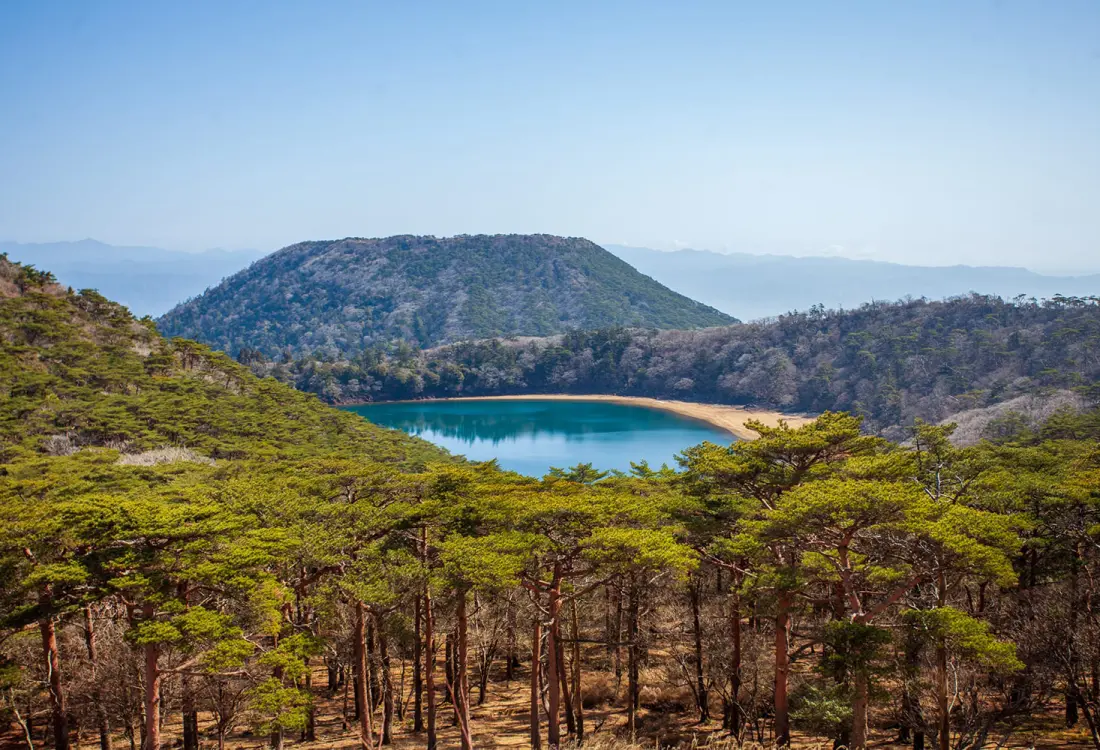
Hiking in Ebino Highlands
Explore the Crater Lakes in the Company of Friendly Deer
As I enter a narrow and jungle-like section of the trail that leads me to moss-covered centuries-old cedar trees, I fully sense the aura that might have led Japan-based author Alex Kerr to write the following words about hiking in Kyushu - “Wherever one looks, the humid, dense slopes are covered with ferns, moss, and fallen leaves. Coming along the bend of an unpaved mountain road, I would suddenly have the illusion that I had traveled back hundreds of millions of years. It felt as though at any moment a pterodactyl might come flying out of the mist.” There are fortunately no pterodactyls on the trail on this sunny spring day, but many Ebino deer are happily strolling in groups.
Once one wanders off into the forest, Ebino Highlands becomes a timeless place where one is free to imagine any period they wish to be in. There is minimal development, thus no visual boundaries between nature and the hikers. The only sights to steal your attention from the dense forest are the active volcanoes smoking in all their glory, the mesmerizingly blue color of the crater lakes, and the Ebino deer often jumping joyfully around.
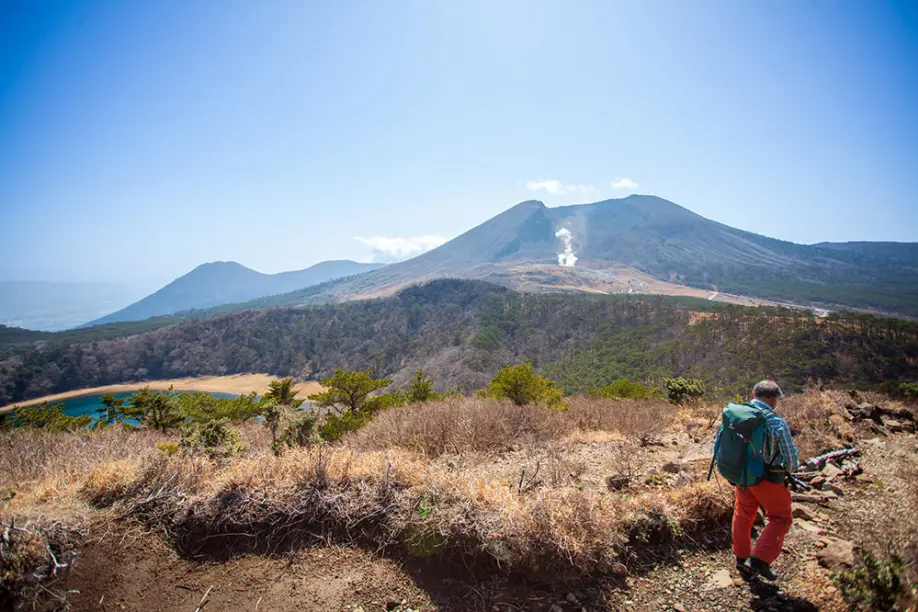
The Ebino Highlands is in Miyazaki Prefecture of Kyushu and part of the Kirishima-Kinkowan National Park. The region is home to numerous trekking courses including peak hikes and circular trails including the crater lakes.
The Kirishima side of the national park which also encompasses Ebino Highlands is home to more than 20 volcanoes, many crater lakes, hot springs, and lava plateaus. Despite the wild and dramatic scenery shaped by ongoing volcanic activity, many of the trails involve flat terrain or gentle inclines allowing hikers of all levels to enjoy this unique environment, home to more than 1,300 plant and many animal species.
It is a perfect day to hike the Ebino Highlands Crater Lake Course, which is rightfully one of the most popular courses in the region. The 5.2-kilometer-long trail, which can be covered at a leisurely pace in around two hours, covers three picturesque crater lakes, namely Byakushiike, Rokkannon-Mikke, and Fudoike (the trail connecting Rokkannon with Fudoike is closed as at the time of this writing due to previous volcanic activity), and the peak of 1,363-meter high Mount Shiratori with excellent views of the surrounding Kirishima Mountain ranges and one of Japan's most active volcanoes – Sakurajima, rising from the ocean and facing Kagoshima city.
The trail for the crater lake course starts right next to Ebino Eco Museum Center, which is a wonderful place to stop by before your hike. Informative boards, both in English and Japanese, highlight the unique aspects of the surrounding ecosystem. There are also excellent video and photo displays offering an inspiring visual preview of the beautiful landscape that those wandering along the trails can experience with their own eyes. Since the region is home to many active volcanoes, hikers are advised to check the latest trail conditions in advance as closures created by recent volcanic activity are not rare.

I am not the only happy hiker on the trail on this sunny day. I soon meet a group of hikers who traveled all the way from Akita in northern Japan to Kyushu to explore the hiking trails of Ebino Highlands. We engage in a quick chat sharing our excitement about the surroundings and tips about the best viewpoints along the course. As I often hike solo, I greatly appreciate the sense of camaraderie easily formed on the trails of Japan. One can always count on friendly interactions with complete strangers, exchanging tips and having the comforting sense of being looked after by fellow hikers.
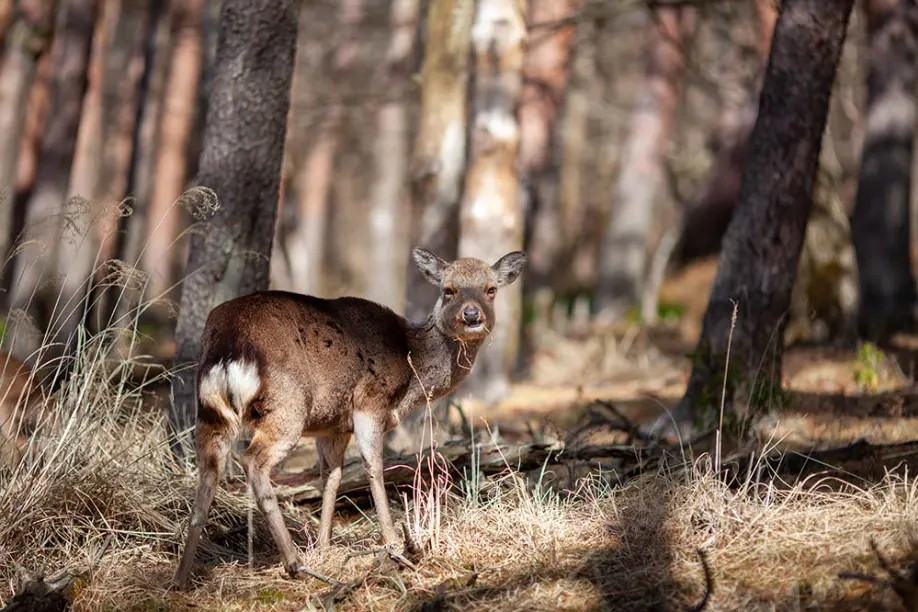
The trail soon leads to a terrain open enough to easily spot the wild deer. Unlike some of the other deer families that I met in Kyushu (particularly the ones in Yakushima), Ebino deers are far from being shy. If you get into a staring match with them, it is likely that you will lose.

While the extrovert deer are not the only beauties calling Ebino their home, which is also home to raccoon dogs, flying squirrels and wild boar among many other species, they are Ebino`s most famous habitants. Despite being rather silent today, the distinct mating call sound made by the male Ebino deer is included among the “ 100 Soundscapes of Japan”, which is a list gathered by Japan's Ministry of Environment to raise awareness about the sounds representative of the country's culture, environment, and heritage.
The scenery along the course constantly changes, keeping things exciting at every turn. I soon reach the Niko Viewpoint, offering views of Lake Byakushiike and Lake Rokkannon.

The cobalt blue color of Lake Byakushiike as a backdrop to the lush forest feels so alluring that it overshadows the sight of another unique nature event happening on the right side – the smoking peak of Mount Io, the active volcano belonging to Kirishima Mountain Range, which last erupted in 2018 after 250-years of silence.
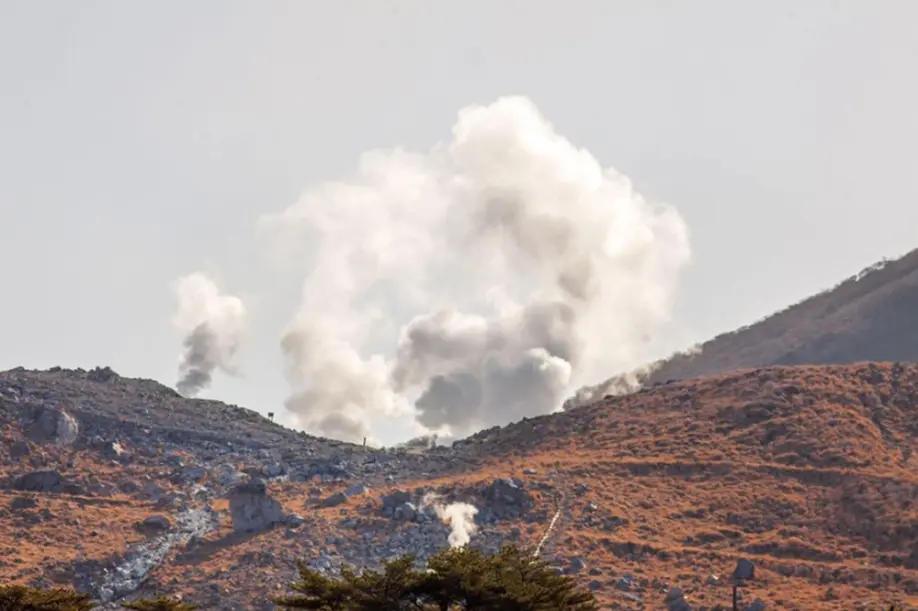
I was not expecting to come across such spectacular scenery so early into the hike and I almost felt like I should have suffered more to have earned it. But this is the magic of Kyushu. Its hiking trails often demand little effort, yet they are always generous enough to reward the guests with unparalleled scenery.
While Lake Byakushiike can today only be enjoyed as part the scenery, in the old days the water used to freeze to a meter deep, turning it into the southernmost natural ice-skating rink in Japan in the winter.

My next stop is the peak of Mount Shiratori at an altitude of 1368-meters. The narrow trail going through colorful bushes soon opens up to a rocky terrain which involves a short but more strenuous climb compared to the rest of the trail. I pause at the misty sight of Sakurajima. They say that the residents of Kagoshima, sitting right across from the volcano, often need umbrellas not only because of the rain, but as cover from the ashes of the picturesque and “lively” Sakurajima.

The peak of Mount Shiratori greets me with a panoramic view of the surrounding mountain ranges and the crater lakes. This is a place where one can truly appreciate the majesty of the area formed hundreds of million years ago.
As I start descending in the direction of Lake Rokkannon, the trail takes the form of a narrow corridor surrounded by lush greenery. I soon approach a tall cedar tree, descriptively named as the Giant Cedar, estimated to be nearly 600 years old. Despite resembling Yakusugi, the Japanese cedar grown in Yakushima Island, and previously mistaken as such, it is believed that the Giant Cedar belongs to the same family of sacred trees planted centuries ago to surround the old shrines of Kyushu such as the nearby Kirishima Jingu.
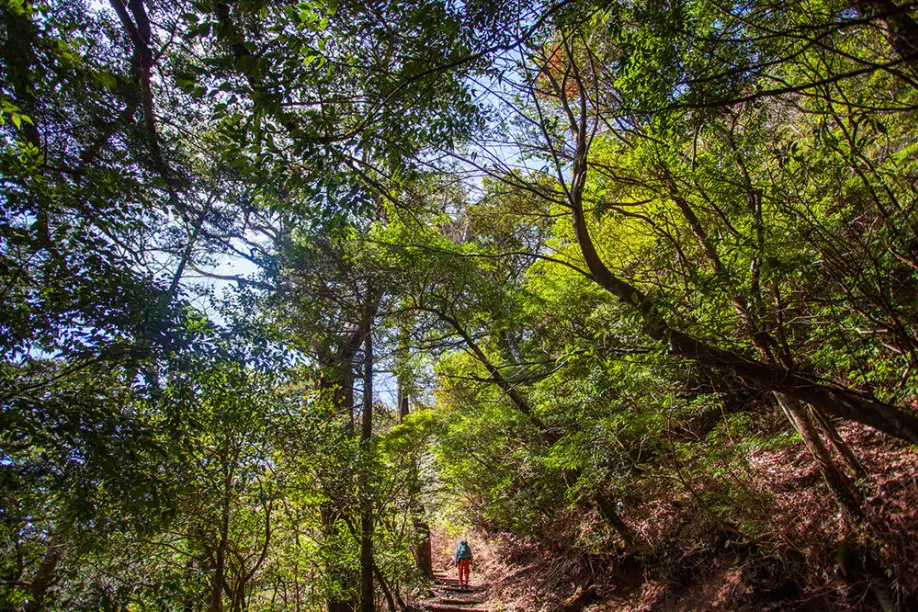
If Alex Kerr was to ever run into a pterodactyl, it would likely be in this terrain surrounded by timeless trees and leading to Lake Rokkannon, the largest of the three crater lakes that the trail covers, with a legend of its own inspiring the construction of the nearby Rokkannon-do Shrine.
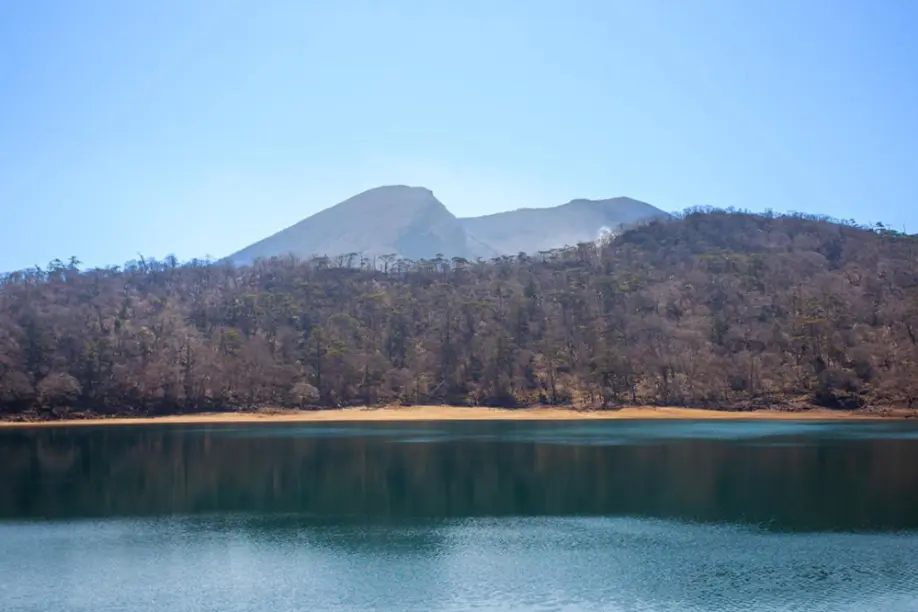
The story goes that Monk Shoku, who lived in the late 900s, was reading the Lotus Sutra out loud by the lake when a gray-haired man approached him. The elderly man explained that he long ago retreated to the mountains of Kirishima disguised as a swan. However, noticing Monk Shoku`s devotion to ascetic practices, he decided to reveal himself to him as a token of his appreciation. Moved deeply by the gesture, Monk Shoku built a hall near the lake and enshrined a handmade carving of Rokkannon.

Due to the closure of the trail connecting Lake Rokkannon to Lake Fudouike, the third lake along the trail, I rejoin the route leading back to the trailhead. The deer are still out, and I pause for a long moment to watch them run around and soak in the nature around me before I trade the timeless forests of Ebino with the city.
As I return to the trailhead, it is already time for lunch. The cozy lunch place right across the Eco-Museum offers filling options including tonkatsu and curry, among others.
Ebino Highlands is fortunately far from being over-developed yet it offers all the amenities that a hiker may need. There are two hotels with onsen facilities open to the day-visitors, a picturesque camping ground, and a lunch place next to a coffee stand and a gift shop, all surrounded by iconic scenery. What more one may need?
Ebino Eco Museum Center

The trails in Ebino Highlands
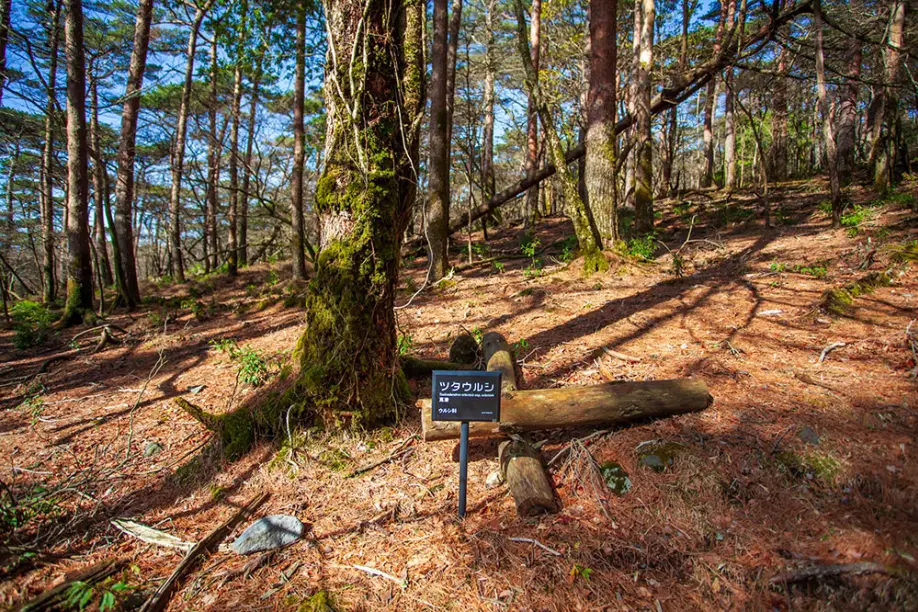
Friendly deer

Amenities
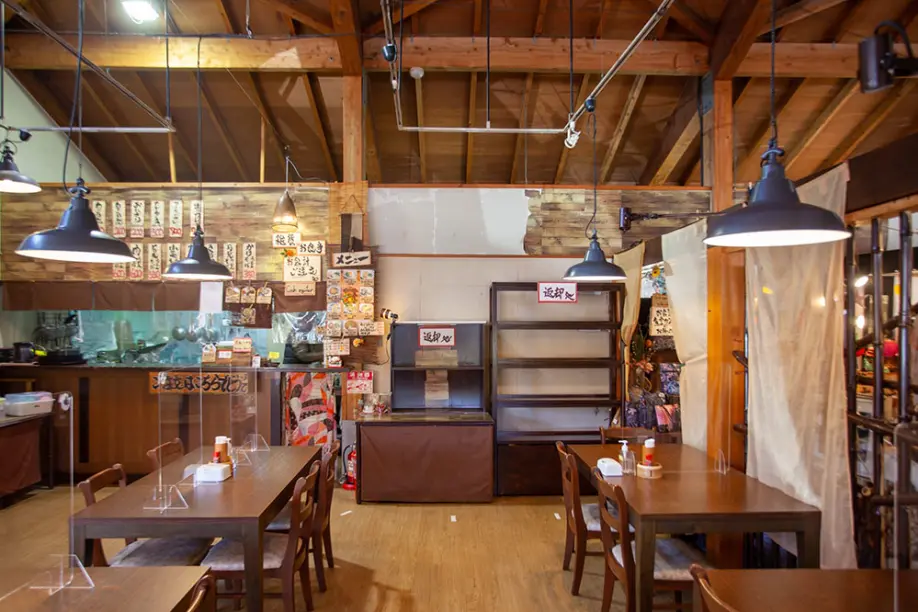

Burcu Basar
Burcu Basar, originally from Istanbul, Turkey, is doing her PhD in Japan in an area that miraculously combines her profession—law—and her passion—national parks. She lives in Tokyo but can often be found in various national parks all over Japan.
 Hiking Matsushima Olle: Course to Explore the Nature and Intriguing History of Amakusa Island
Hiking Matsushima Olle: Course to Explore the Nature and Intriguing History of Amakusa Island Mount Aso: Nature at Its Most Majestic
Mount Aso: Nature at Its Most Majestic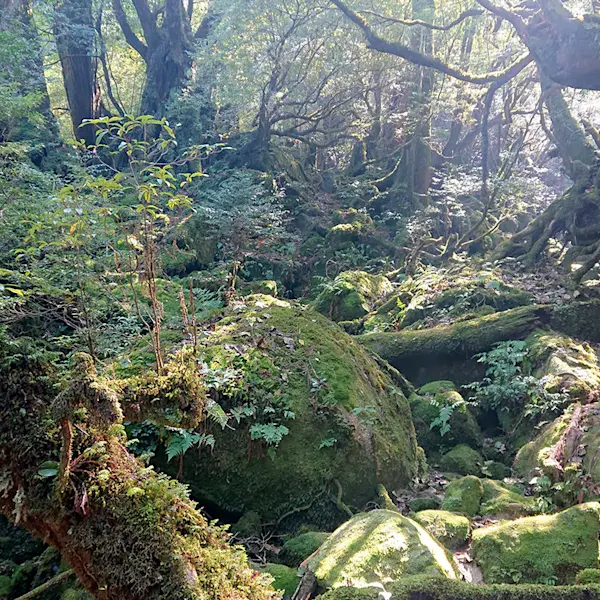 Yakushima: Trekking through Japan’s thousands-year-old forest
Yakushima: Trekking through Japan’s thousands-year-old forest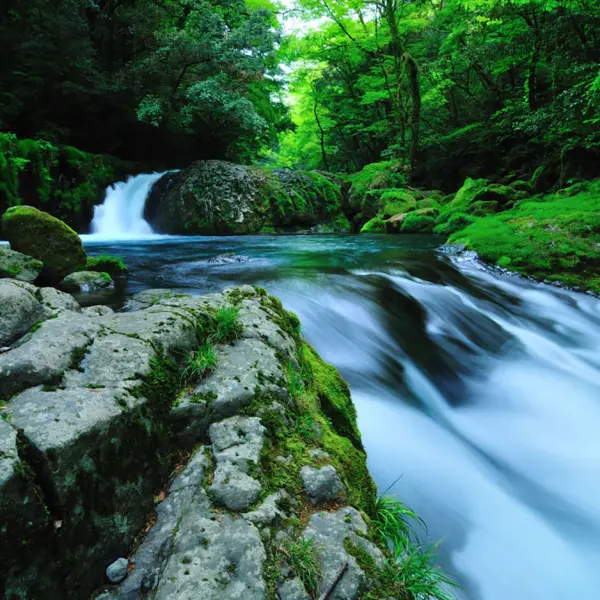 Kikuchi District - The Great Outdoors of Kyushu
Kikuchi District - The Great Outdoors of Kyushu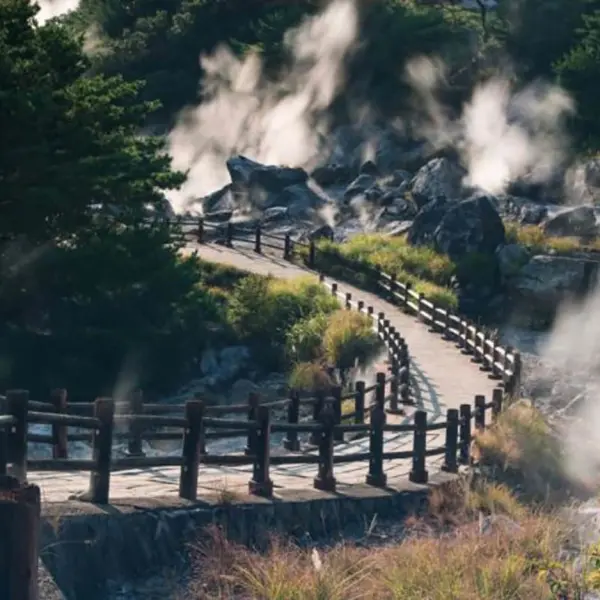 To Hell and Back: Walk Through the Steamy Hot Springs of Unzen
To Hell and Back: Walk Through the Steamy Hot Springs of Unzen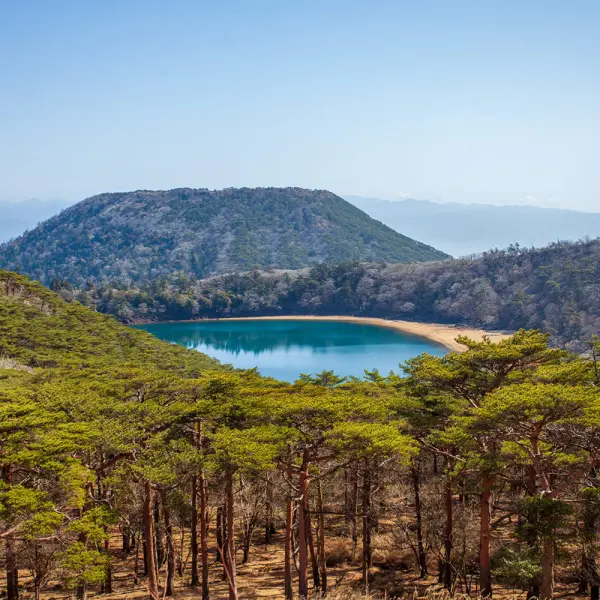 Hiking in Ebino Highlands: Explore the Crater Lakes in the Company of Friendly Deer
Hiking in Ebino Highlands: Explore the Crater Lakes in the Company of Friendly Deer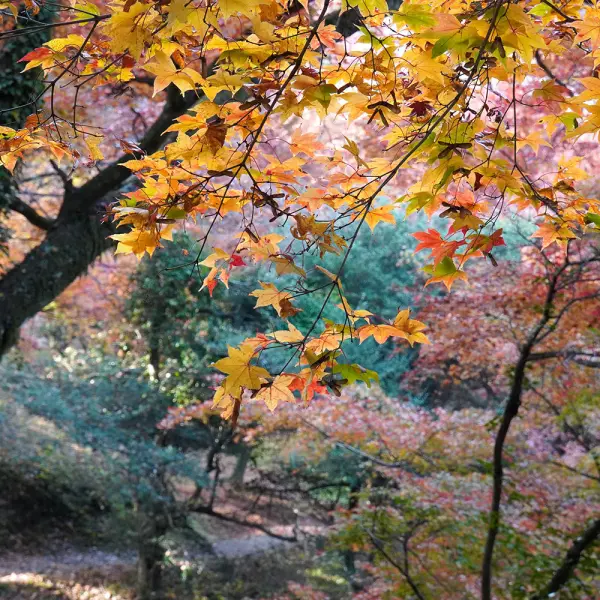 Kyushu Olle: An Autumn Hike on the Okubungo Course
Kyushu Olle: An Autumn Hike on the Okubungo Course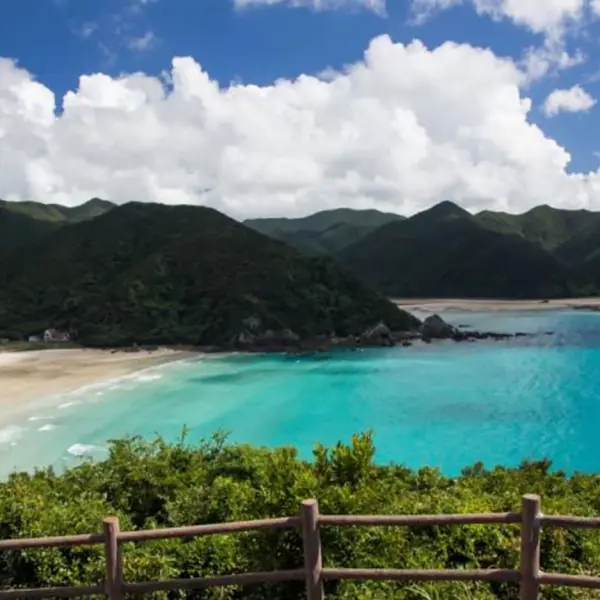 Driving Around Fukue Island: Hidden Churches and Stunning Beaches
Driving Around Fukue Island: Hidden Churches and Stunning Beaches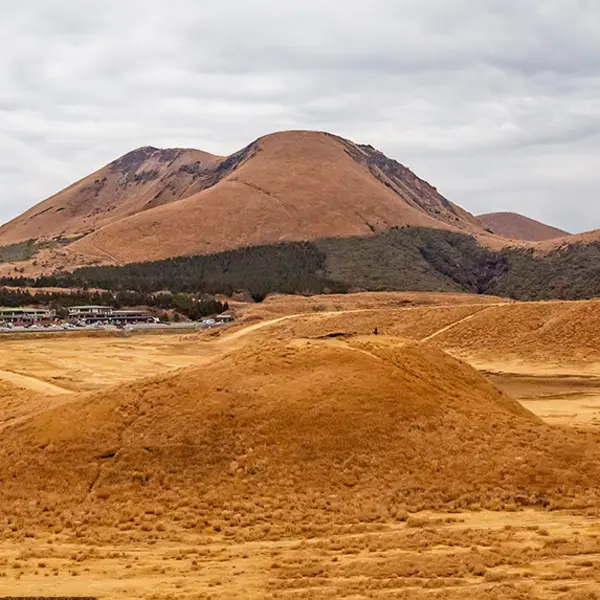 Hiking Trails at Aso Kusasenri
Hiking Trails at Aso Kusasenri Cape Toi in Miyazaki: A Festival of Colors
Cape Toi in Miyazaki: A Festival of Colors




